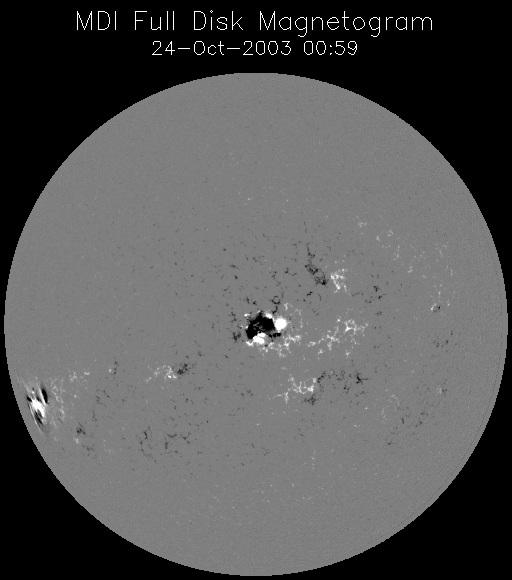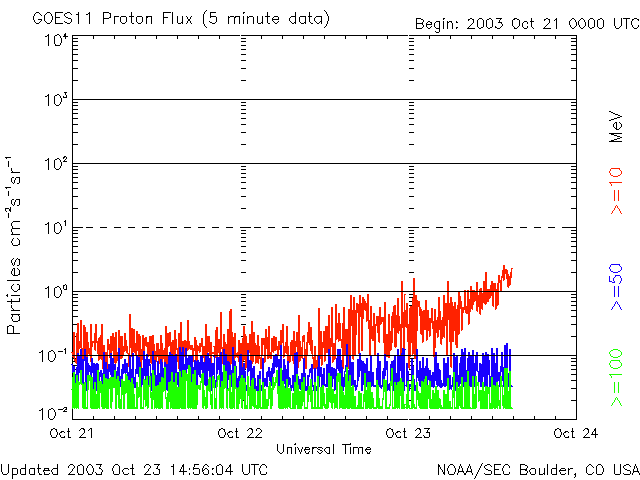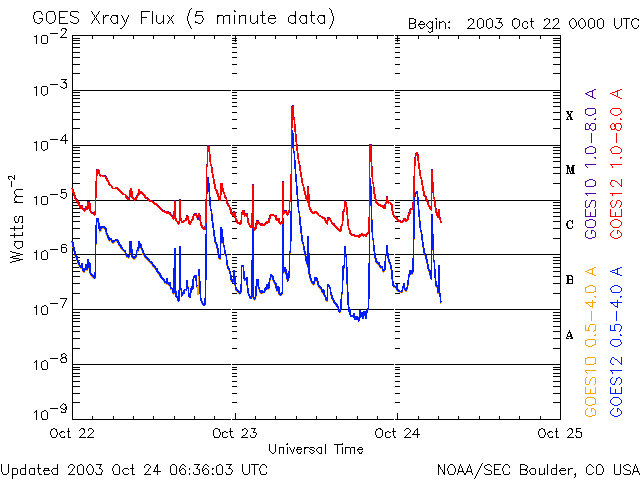This time it is not Catania sunspot group 065, but sunspot group 070 (NOAA 10486) that is responsible for all the trouble. This group rotated over the east limb on October 23.

The "green" sun is an image taken by EIT on SOHO. The active region which produced the X-flare is bright because it is emitting strongly in 19.5 nm.
Subsequently, the SIDC sent out an alert message on October 23 at 08:56 UTC:
At present a large X-flare is going on. It has reached its maximum value X5.4 in GOES 12 x-ray data at 08:35UT.
Another alert message has been sent on October 23 at 20:56 UTC:
Another X1.1 flare just happened near the east limb. It is again located in the NOAA 10486 (Catania 070) sunspot group (S17E88, EIT derived location). It started at 19:50, peaked at 20:04 and stopped at 20:14 UT.

The SOHO/MDI image above shows the magnetic field strengths: black and white spots denote areas of intense (opposite) magnetic flux. The spot near the east limb (on the left) rotated only shortly before on the solar disk and showed already some fireworks!

The proton flux is slightly enhanced. But, the protons with energy larger than 10 MeV did not reach the threshold yet. This graph is made with data measured by GOES.

Scientists classify solar flares according to their x-ray brightness in the wavelength range 1 to 8 Angstroms. We have the A, B, C, M and X level. X-class flares are big; they are major events that can trigger planet-wide radio blackouts and long-lasting radiation storms. These measurements are made by GOES, a geostationary satellite.





